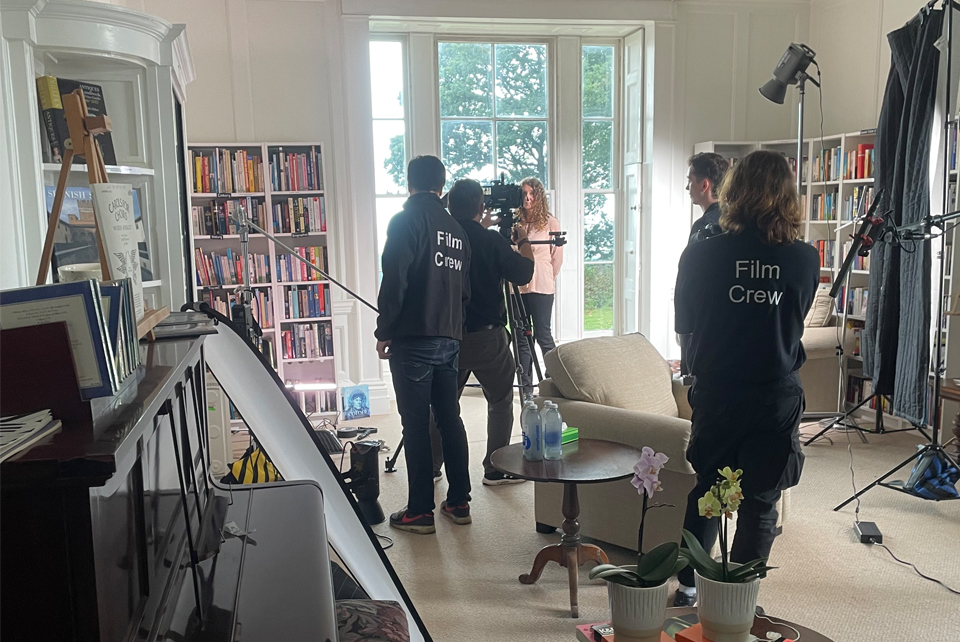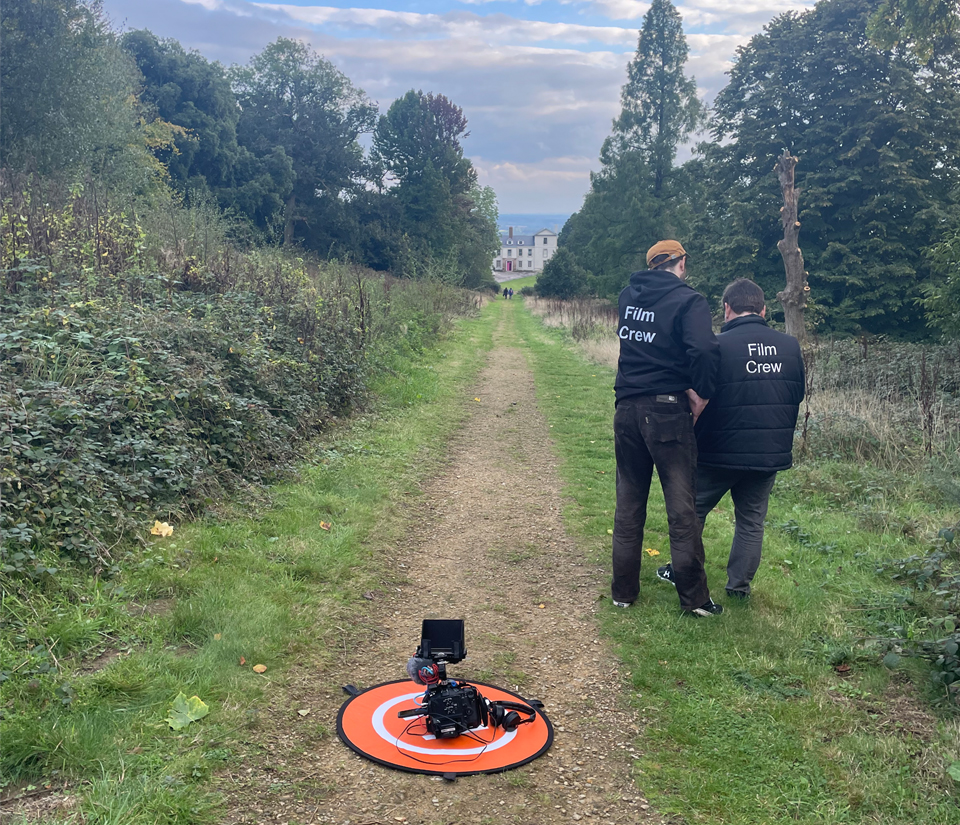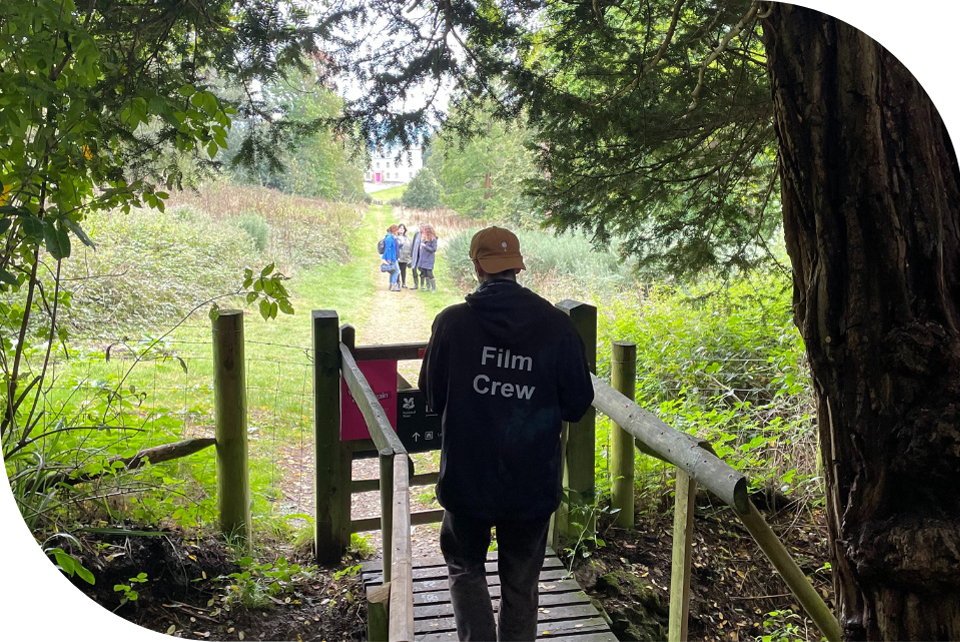Over the past few months, we have been working closely with East Surrey Domestic Abuse Services (ESDAS) to create a film to shine a light on the breadth of services they provide and to highlight the scale of demand in the local area. Most importantly, we wanted to speak directly to Survivors in need of support, to break down barriers and demystify the process of seeking help.
We filmed the majority of the interviews across two days at Leith Hill National Trust, where the September sun shone through the windows into the historic lounge as our interviewees took their seats. Michelle Blunsom MBE, CEO talked through the mission of ESDAS, the challenges the charity faces, the importance of harnessing lived-experience within the organisation and how their services can be accessed by anyone, regardless of gender, race, faith or sexual orientation. Two Survivors bravely shared deeply-personal accounts of their journey from darkness to hope. And Virginia, ESDAS Outreach Worker delivered thought-provoking insights into what barriers might prevent Survivors from seeking help and why it is so important to understand the role played by coercive control in cases of Domestic Abuse.
During a break in the individual interviews, the group came together to discuss some of the latest National Statistics on domestic abuse.
As we began our discussion, Michelle spoke about the need for systematic change:
“A change that isn’t driven through the lens of domestic violence because currently, everything is determined through the risk of physical violence. We know that the greatest risk anyone faces is coercive control. The higher the level of coercive control, the more likely you are to experience extreme or fatal domestic abuse.”

The group then read the following statements. Their subsequent discussions highlighted the immense difficulties faced by so many Survivors of domestic abuse, the barriers to seeking help and the plethora of complexities that Outreach Workers must navigate on a daily basis to support those who call in to ESDAS:
It takes between 7-12 times for a Survivor to leave their Perpetrator.
M: We often have people leave, then go back. For us, it’s vital we provide that sense of safety from our very first conversation. We often have milli-seconds to gain trust. So, before they leave they know that if it doesn’t work this time, they can pick up the phone and understand there’s no shame in that. Otherwise, they may think “you’ve done loads of work for me and then I’ve let you down”. But there are fundamental reasons at play; they could have forgotten a kids’ toy, or the place they went to wasn’t right or the perpetrator became the person they fell in love with again and was so sorry…All of these things are huge factors in pulling you back into that life. We have to allow people the space to try and for it not to work, and try again until such a time when that plan to leave feels right.
L: And for people where English isn’t their first language, trying to pick up the phone and explain their situation. Your command of the language may be very limited; you may be on a certain type of visa which puts you at risk; so all of this is running through your mind.
M: And “Am I entitled? Is there even a Law to protect me?”
L: They may not know what their rights are. It makes such a difference to have a female interpreter. And to give them the same interpreter as it makes such a difference to keep it consistent so that they haven’t got to keep repeating themselves.
1 in 4 women experience domestic abuse since the age of 16.
M: That’s quite a shocking statistic.
L: I think that’s probably even higher.
M: Yes, this only accounts for those that have disclosed in a crime survey or elsewhere. The other thing to consider is male Survivors – what does feel like for them to come forward? Whilst females are often invisible in their experiences, for male Survivors it can be incredibly challenging for them to come forward. This leads into the fact that anybody can experience domestic abuse, regardless of their ethnic or religious group, sexuality, class, disability and gender.
Talking about domestic abuse existing within the wider framework of violence against women and girls, you would include things like forced marriage, female genital mutilation and so-called honour crimes. In these cases you are often dealing with multiple perpetrators, including your own family and the complex dynamics that that brings for Survivors.
Young people experience the highest rates of domestic abuse than any age group.
V: Not all young people have a model of a healthy relationship. They’re all testing the water, and if somebody tells you that this is normal and this is how you should behave, how do you know that it isn’t normal?
M: We do a lot of work in this space with young people. We have a Violence against Women & Girls Prevention Worker; we also have a Young Peoples Worker specifically going into schools and colleges having these conversations. Again, it’s all about conversations and sewing that seed that there is an alternative and creating those safe spaces.
Studies have shown that disabled women are twice as likely to experience domestic abuse and also, twice as likely to suffer assault and rape.
V: If you have a disability, your perpetrator might be your carer and it’s really hard to come forward because what would it mean to take action? You lose your carer. So I think that brings real barriers for those women.
M: Also, a perpetrator can use that status to further control. They can put themselves forward as your spokesperson, even though you are more than capable of voicing your own opinion to professionals and people involved in your care. How do they make it appear that you haven’t got a voice in that? We have to work with Adult Social Care and other charities in partnership, to make sure their workers can spot the signs but also if they have a trusting relationship with carers going in, how do we make sure that they can get information to that person?
V: Talking more specifically about mental health, we know that a lot of people we work with will say that mental health is something that’s constantly used by the perpetrator. And if somebody has a mental health diagnosis, how easily a perpetrator can disguise their own behaviour and blame it on the diagnosis.

As we brought the conversation to a close so that our film crew could prepare the cameras for the afternoon session outdoors, Lee Mancini, Film Director Agility Films, asked the group:
“What message do you have for a Survivor?”
L: We’re here for you when you’re ready for us. We believe you and we’ll walk with you at whatever pace you need.
V: When you’re ready, call us. Call us again, and again, and again. We’re here to listen and we’re there for you every step of the way.
C: If you’re reading this and you don’t think things are right, or you just can’t do this anymore - you can have faith in ESDAS because they get it, and it’s at your pace, when you’re ready and they will keep you safe, as best they can.
M: I know it feels dark right now but there is some light and I’d hope that, when you’re ready, ESDAS can help you find your sense of self and find that hope of something different. I also recognise that it’s scary and you’re right to be scared. But we’re here for you when you’re ready, to walk alongside and to navigate this with you.
Watch ‘From Darkness to Light: A Survivor’s Journey’ here:
Film Directed and Produced by Agility Films
Contact ESDAS
If you are ready to seek help or know of someone who needs help, contact ESDAS here.
Call: 01737 771350 | Email: support@esdas.org.uk
If you would like to find out how to support the work of ESDAS through fundraising, volunteering or partnering with the organisation via corporate sponsorship, find more information here.
